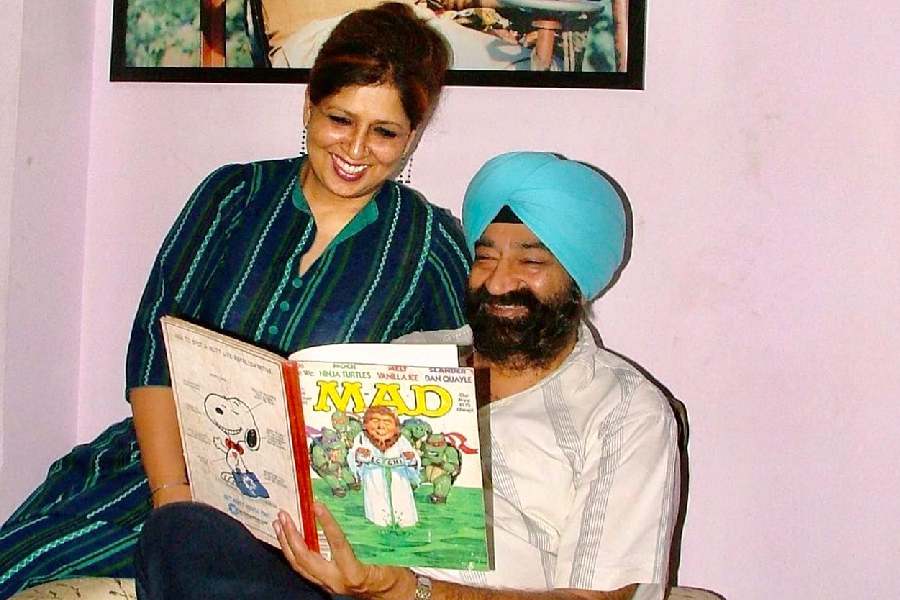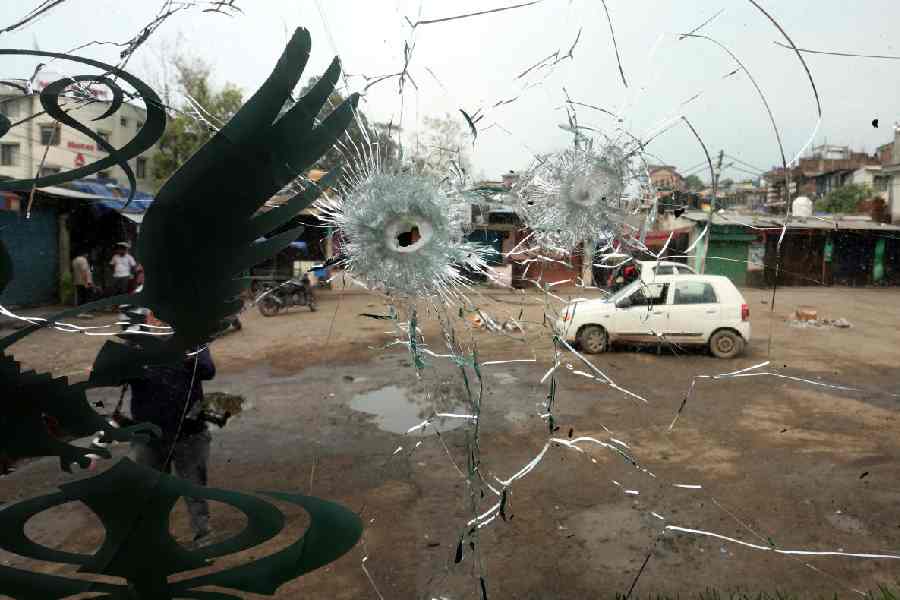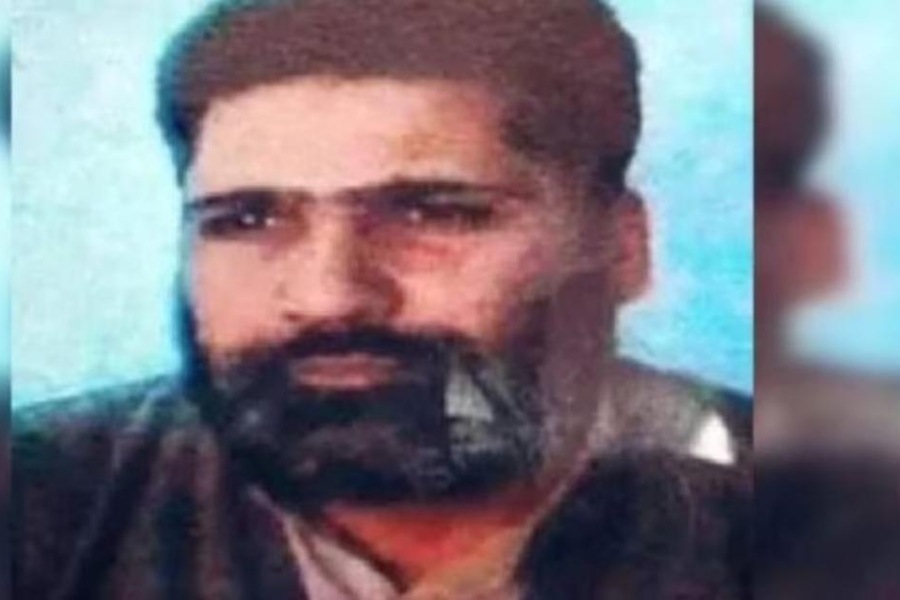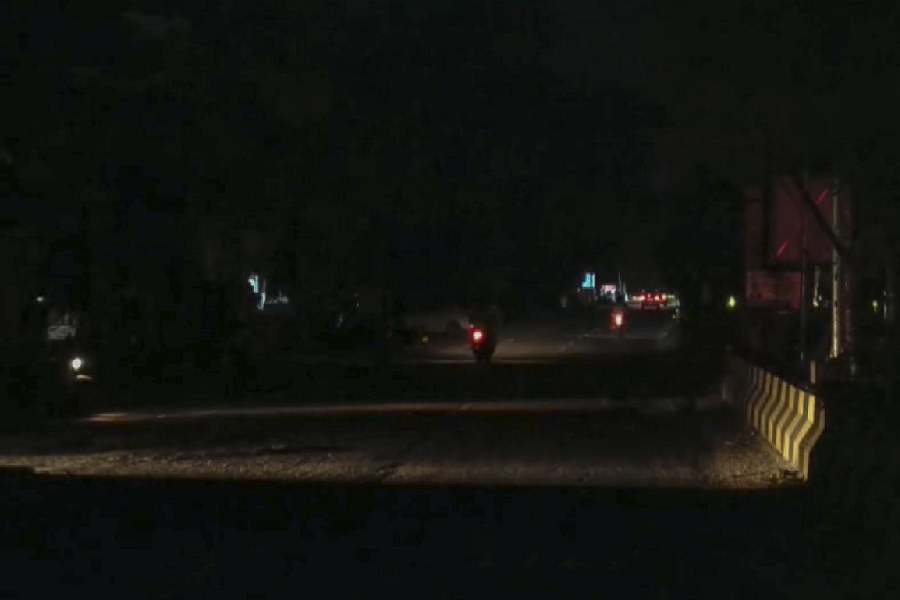
London, Aug. 30: Princess Diana's sons, William and Harry, who were 15 and 12 respectively when their mother died 20 years ago in a car crash in a Paris tunnel in the early hours of August 31, 1997, were today visiting the White Garden adjacent to Kensington Palace in her memory.
As the princes, accompanied by Kate, Duchess of Cambridge in torrential rain, took in the fragrant white roses, scented narcissi, Cosmos daisies and a carpet of forget-me-nots that the princess had loved and greeted representatives of many charities she had supported, floral tributes were again piling up at the gates of Kensington Palace.
Once Diana's home, this is where the princes now live and where Harry openly brings in his American actress girlfriend Meghan Markle. In contrast, Diana used to sneak in her Pakistani surgeon lover, the burly Hasnat Khan, in the boot of a car.
"There's not a day that William and I don't wish that she was... still around," Harry admitted recently, also revealing he had been psychologically unhinged by his mother's death and especially the cruelty of being forced to walk behind her cortege in full view of world.
"I don't think any child should be asked to do that, under any circumstances," Harry declared.
Unlike his younger brother, William has not consulted a psychiatrist, but he commented that "on grief, I find talking about my mother and keeping her memory alive very important. I find it therapeutic to talk about her, and to talk about how I feel".
The old Britain of the stiff upper lip is now gone to be replaced by a nation where it is acceptable for men to be "touchy feely" and emotional.
In fact, much has changed in Britain in the last 20 years since Tony Blair, then Prime Minister, emerged from 10, Downing Street, and summed up the mood of a traumatised nation with the words that his director of communications, Alastair Campbell, had written out for him: "She was the people's Princess and that is how she will stay, how she will remain in our hearts and our memories forever."
Diana, who was 36 when she died (alongside her then boyfriend Dodi Fayed and the chauffeur Henri Paul) would today have been a grandmother of 56. Diana would have approved of one big change that has been pushed through - same sex marriage.
By 1992, by the time Diana and Charles returned from India, after she had posed alone in front of the Taj in Agra and then visited Mother Teresa's home in Calcutta (although the latter was ill in Rome at the time), the fairy tale marriage was over.
In the last few weeks, as the 20th anniversary of her death has approached there has been almost a feeding frenzy as the entire British media have whipped up a Diana craze with books, tv programmes and endless coverage of the life and times of the departed princess.
Some tabloids have served up a daily diet focusing on everything from her lovers to her clothes and her jewels and why, according to massaged opinion polls, the British people had not forgiven Camilla Parker-Bowles (now Prince Charles's second wife as the Duchess of Cornwall) for breaking up Diana's marriage and did not ever want her as their queen. Meanwhile, the legend of Diana has grown in the telling. And no one has been more vicious in pulling it apart than the author Hilary Mantel, 65, a double Booker Prize winner who delivered the BBC's prestigious Reith lectures this year.
To her fans Diana, then as now, could do no wrong. Others condemn her as "a loose canon" who deliberately set out to damage the royal family once Charles had dumped her and returned to Camilla, his long time mistress.
The royal family retaliated by stripping her of her title and downgrading her from "Her Royal Highness" to "Diana, Princess of Wales". Now, 20 years on, her sons are attempting to restore her standing although they reject the notion that in the process they are seeking revenge on their father for discarding their mother.
No doubt their sorrow is genuine but in assessing the effect Diana's death has had on British society, Mantel has been unforgiving.
She attacked the recent Channel 4 documentary, Diana In Her Own Words, which the author said showed the princess "squirming, twitching, avoiding the camera's eye; she describes herself hopefully as 'a rebel', on the grounds that she liked to do the opposite of everyone else.
"You want to veil the lens and explain: that is reaction, not rebellion. Throwing a tantrum when thwarted doesn't make you a free spirit. Rolling your eyes and shrugging doesn't prove you are brave."
Mantel went on: "For some people, being dead is only a relative condition; they wreak more than the living do," said Mantel.
"The princess we invented to fill a vacancy had little to do with any actual person. Even at the beginning she was only loosely based on the young woman born Diana Spencer, and once she was engaged to the Prince of Wales she cut adrift from her modest CV.
"When Diana became the most famous woman in the world, it is not surprising that less popular members of the Firm were miffed. The queen herself had been a beauty, but may have thought it vulgar to be too interested in one's looks. Diana was allowed to interest herself in little else. Her dealings with the press and photographers were not innocent. The images had to be carefully curated - her good side, so to speak. There were unacceptable angles. And when an image is created by the lens it can fuzz and slip and blur.
"Cut loose, she opened the doors of her identity and all the dead princesses floated in, those deposed and exiled, beheaded and shot. With them came the screen idols and the spoiled glamour girls - Monroe naked and dead, Garbo who wanted to be alone.
"To her credit, she had begun to work actively to lessen the amount of pain in the world. She visited the sick, and stopped just short of claiming the healing touch that custom bestows on the divinely anointed; had she become queen, she would surely have gone about raising the dead.
"The divorce was a sour one. It is difficult to extract sober truth from the bitching of the sycophants on either side. Diana won the War of the Waleses because she was ruthless, and had better legs.
"When Diana died, a crack appeared in a vial of grief, and released a salt ocean. A nation took to the boats. Vast crowds gathered to pool their dismay and sense of shock. As Diana was a collective creation, she was also a collective possession. The mass-mourning offended the taste police. It was gaudy, it was kitsch - the rotting flowers in their shrouds, the padded hearts of crimson plastic, the teddy bears and dolls and broken-backed verses.
But all these testified to the struggle for self-expression of individuals who were spiritually and imaginatively deprived, who released their own suppressed sorrow in grieving for a woman they did not know. The term 'mass hysteria' was a facile denigration of a phenomenon that eluded the commentators and their framework of analysis.
"It is irrelevant to object that Diana alive bore no resemblance to Diana dead," Mantel concluded.
Even by the standards of Private Eye, the current cover of the satirical magazine - "Diana Haunts Charles. Inside: 94-page special on the papers' princess" - is in questionable taste.
Camilla and Charles are standing side by side, with her saying, "The anniversary isn't going so well," and her husband responding, "It's a car crash."










